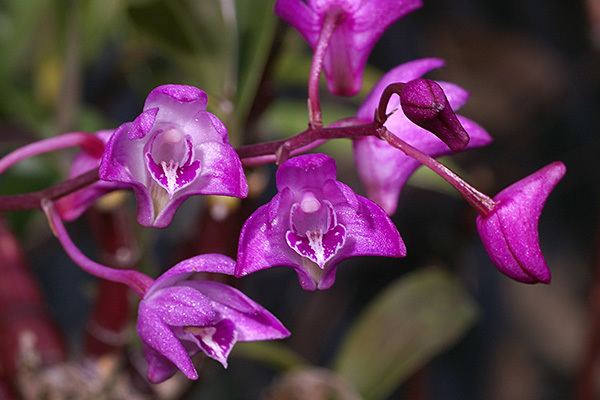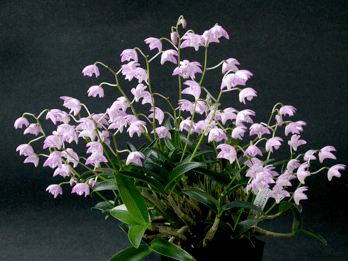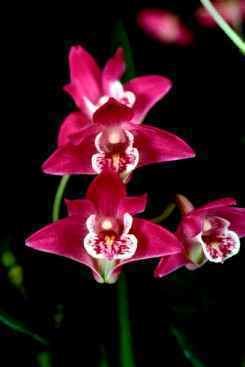Subtribe Dendrobiinae | Genus Dendrobium Higher classification Dendrobium | |
Similar Dendrobium, Orchids, Dendrobium speciosum, Vappodes phalaenopsis, Dendrobium tetragonum | ||
Easy orchids dendrobium kingianum culture with blooms and why this orchid grows keikis
Dendrobium kingianum or Thelychiton kingianus, commonly known as pink rock orchid or Captain King's dendrobium is a flowering plant in the orchid family Orchidaceae and is endemic to eastern Australia. It usually grows on rocks and has thin, spreading leaves and spikes of up to fifteen, usually pink flowers in late winter to spring. It is popular in horticulture and is one of the most commonly cultivated orchids.
Contents
- Easy orchids dendrobium kingianum culture with blooms and why this orchid grows keikis
- Dendrobium kingianum orchid plant
- Description
- Taxonomy and naming
- Distribution and habitat
- Use in horticulture
- References

Dendrobium kingianum orchid plant
Description

Dendrobium kingianum is usually a lithophyte but is occasionally an epiphytic or terrestrial plant. It sometimes occurs as an individual plant but can also form large clumps. Spongy, white roots enable it to absorb water quickly from a wet rock surface whilst at other times, reflect light to avoid overheating during long dry spells. The stems or pseudobulbs may be erect or spreading but are always succulent, serving as a water storage organ during dry periods. The roots emerge from the thicker base end of the stem, which tapers towards the tip. The stems are 5–30 cm (2–10 in) long and 1–2.5 mm (0.04–0.1 in) in diameter and have between three and six leaves near the tip. The leaves are thin, green and smooth, folded along the mid-line, narrow egg-shaped and 3–10 cm (1–4 in) long and 10–20 mm (0.39–0.79 in) wide.

The flowers are arranged on a raceme 7–15 cm (3–6 in) long, with between two and fifteen flowers. The sepals and petals are usually pink but may be pure white, dark purple or a range of intermediate colours. The dorsal sepal is 9–16 mm (0.4–0.6 in) long, 4–7 mm (0.2–0.3 in) wide and the labellum is 8–15 mm (0.3–0.6 in) and 7–12 mm (0.3–0.5 in) wide, usually with dark purple marks. Flowering mostly occurs from August to October but often earlier or later.
Taxonomy and naming

Dendrobium kingianum was first formally described by John Bidwill and his manuscript was published in The Botanical Register, edited by John Lindley. In 2002, Mark Clements and David Jones proposed changing the name to Thelychiton kingianus but the change has not been accepted by the National Herbarium of New South Wales. The specific epithet (kingianum) honours Admiral Phillip Parker King, explorer of Australia.
Distribution and habitat

Pink rock orchid occurs from the coast to nearby ranges between the Hunter River in New South Wales and Rockhampton in Queensland where it usually grows on rock in forest and woodland.
Use in horticulture
Pink rock orchid is popular in cultivation and is relatively easy to grow. It needs to be grown on bark or fixed onto rock in a warm sunny position where the humidity is relatively high. It is available from specialist nurseries but it is illegal to collect specimens growing in the wild.
